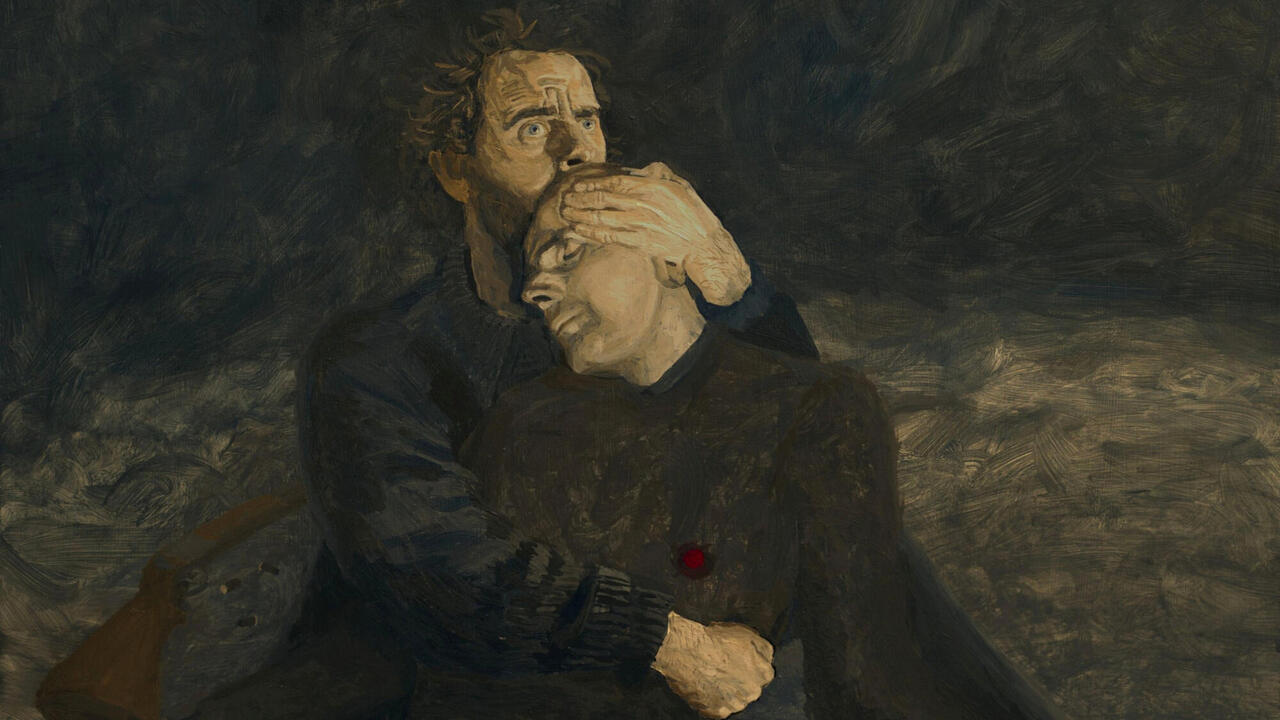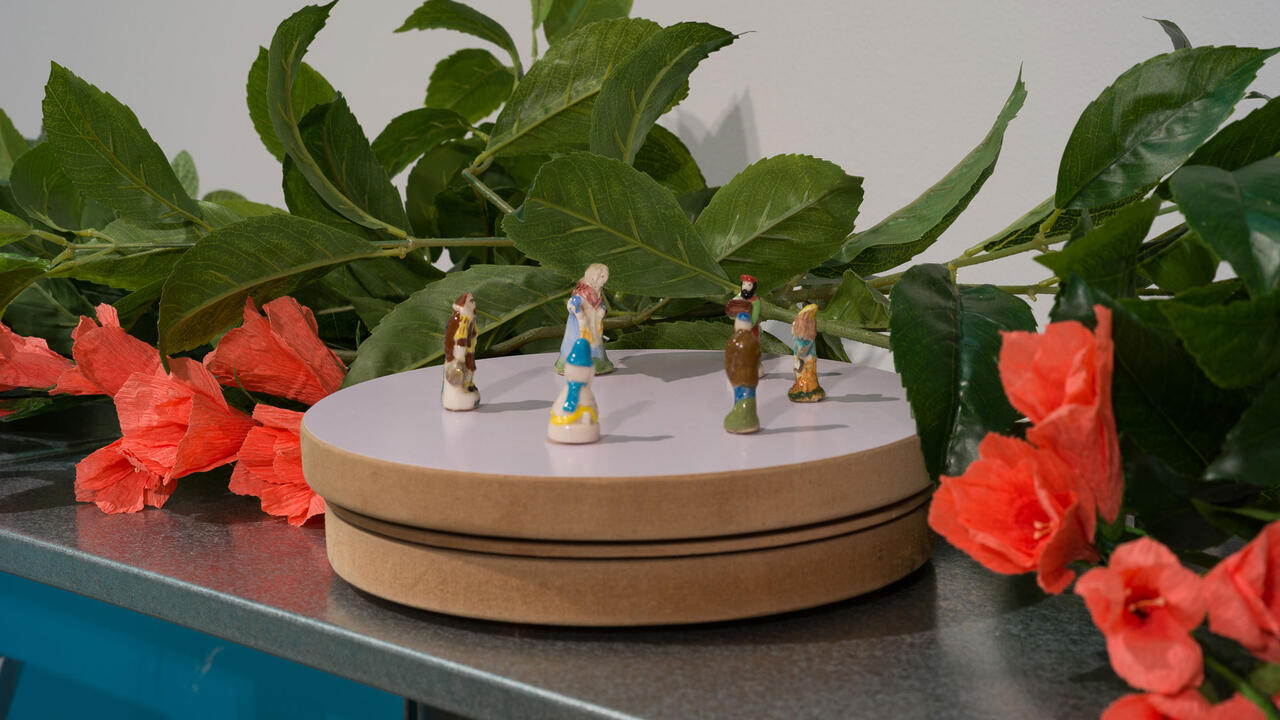Jim Isermann and Jorge Pardo
Anyone who wanted to see the collaboration between Jim Isermann and Jorge Pardo first had to make a decision. The installation consisted of two forms of carpeting which together covered the entire floor of the room in which they were exhibited. Pardo's contribution was the store-bought, mass-produced type dirty olive in colour and installed wall to wall. Centred over that was Isermann's work: a large hand-braided item woven in concentric rings of fantastic, explosive colour. But in order to actually see either component, visitors had to choose between three options: proceed to the entrance of the room housing the work and stare wistfully at it from the doorway; slip on a pair of plastic booties and risk feeling extremely silly; or bend over, take off your damn shoes and dig your toes into the beckoning nap. The decision was a no-brainer.
Indeed, in one important way, this whole project was a no-brainer, and that was the beauty of it. Isermann and Pardo address problems of style and decoration at the juncture between fine art and applied design. The critical discourse upon which both artists draw can be as esoteric and conceptually demanding as you want it to be. Their collaborative piece could address these issues, or it could simply be gorgeous to look at, pleasing to have in the room and comforting to walk on. The choice was whether to indulge the feet or indulge the mind. Feet won hands down.
But when a piece of art asks you to walk all over it, you've got to wonder whether things are really so simple. Probably not, but there was something very easy about this project, something that required no prior knowledge, asked for no interpretation, needed no thought. In a way, the work was nothing more than what it seemed to be. That was startling, and more than a little disorienting. Rather than challenge the audience in one way or another, the installation hooked us in with unabashed generosity: it offered sensual pleasure without asking for intellectual penance.
At the same time, though, the work wasn't stupid, and that's a tricky jig to pull off. More than any aesthetic issue, this project addressed the whole experience of looking at art. Having to consciously decide how exactly you were going to perceive the work whether or not to take off your shoes set the tone. Visitors were taken outside the familiar gallery experience and offered an artwork that could be known through some sense other than just vision and a channel other than mental contemplation. You were asked to relax, to take off your shoes, to enjoy the entire ambience. It was like being invited to a friend's living room. This modification of one's physical experience and recontextualisation transportation even of one's mindset weren't seen by Pardo and Isermann as difficult, mystical functions. The goal was modest: they simply returned you from the austere, alienating space of the gallery to a small part of the comfort of home. They succeeded because the illusion was so do-able, but that made the sensation no less dramatic or delightful.
Both Pardo and Isermann know that the art gallery depends, to some degree, upon a qualitative difference between what you experience there and what you experience anywhere else. With this project they simultaneously acknowledged that distinction and dissolved it. The drama didn't play off the tension between the everyday and art, nor did it play off any tension between the handmade and the mass-produced. All of that was levelled out to make way for a scene of happy compromise. The handmade rug was just as functional and close to the ground as the commercial carpeting. Nor were either of them sullied when actually put to physical use. Producing pleasure and delighting the senses are, after all, more than just hard work for the artist they're pretty utilitarian things for the spectator.














